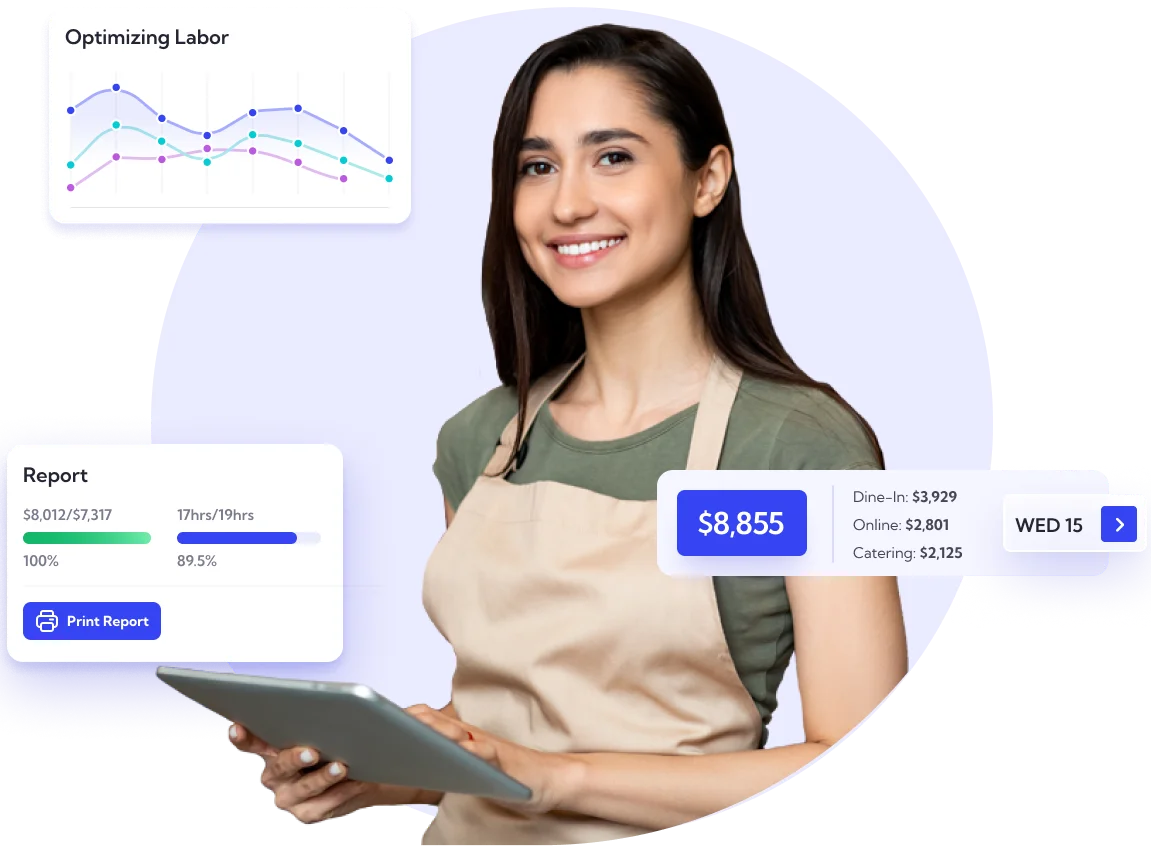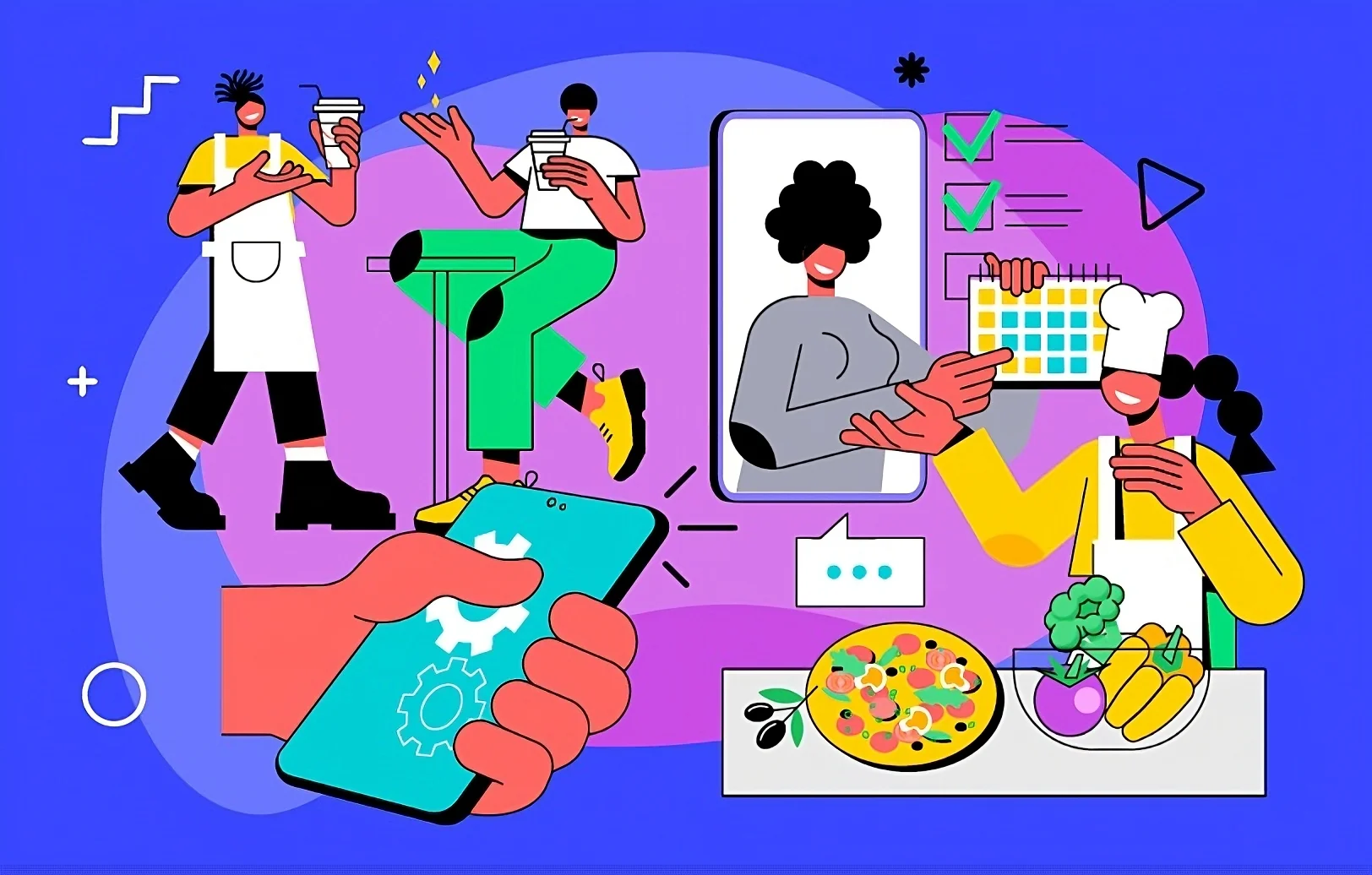Restaurant managers struggle with creating efficient schedules that meet business demands and employee preferences.
Poor scheduling can lead to understaffed shifts, overworked employees, scheduling conflicts, and decreased employee satisfaction.
Scheduling management tools offer an automated and efficient solution for generating schedules considering staff availability, preferences, and business needs. These tools can improve labor cost control, employee satisfaction, productivity, and compliance with labor laws.
This article will discuss the benefits of using scheduling management tools in restaurants.
1. Efficient scheduling
According to a TimeForge survey, restaurant managers spend an average of 2.64 hours each week creating employee schedules, which equates to 6.61% of their work week. These statistics are among the reasons why efficient scheduling is essential to restaurant management.
This is where scheduling management tools come in. The software can automatically generate schedules based on staff availability, shift preferences, and business needs.
These features save managers significant time and ensure accurate and fair schedules. The software can also help managers create schedules in advance, which reduces the likelihood of last-minute schedule changes and confusion.
Lineup.ai is a good example of a robust scheduling management tool for restaurants that uses advanced algorithms to predict labor demand and optimize schedules. The software seamlessly integrates with other restaurant systems like POS and payroll, providing real-time data and analytics.
These features help managers make informed decisions about staffing levels, reduce labor costs, and improve employee satisfaction.
2. Better communication
Scheduling management tools allow managers to communicate schedule changes and shift swaps with staff. This makes it easier for staff to stay up-to-date on their schedules and reduces the likelihood of scheduling conflicts.
The software can notify staff about upcoming shifts, schedule changes, and other relevant information. This helps to improve communication and collaboration between managers and staff, which is crucial for a successful restaurant operation.
Lineup can also help facilitate better internal communication in restaurant operations. The software lets managers communicate with their staff about schedule changes, shift swaps, and other important updates via the platform's built-in messaging system. This allows for easy and timely communication, reducing the likelihood of scheduling conflicts and misunderstandings.
With scheduling management tools, restaurant managers can streamline their communication channels, reducing the likelihood of scheduling errors and creating a more cohesive team.
3. Improved labor cost control
Scheduling management tools improve restaurant labor cost control by enabling managers to track and accurately forecast labor costs. The software helps managers monitor overtime and adjust schedules to stay within budget, optimizing labor costs and reducing expenses.
These tools can also identify scheduling inefficiencies, such as over or under-staffing, and adjust schedules to improve productivity and reduce labor costs.
Reports generated by the software provide insights into labor costs and scheduling trends, allowing managers to make data-driven decisions that enhance their bottom line.
In addition, automated restaurant forecasting tools enable restaurant managers to reduce labor costs, resulting in a more profitable and efficient business operation.
The software's forecasting, monitoring, and reporting capabilities allow managers to make informed decisions about labor scheduling. This benefit helps managers optimize their resources and improve their overall operations.
4. Increased employee satisfaction
Scheduling management tools can help managers accommodate staff preferences and reduce the likelihood of burnout. By creating fair and efficient schedules, managers can increase employee satisfaction and retention.
The software can also help managers identify underutilized or overworked staff and adjust schedules accordingly. This can help to reduce stress and improve work-life balance for staff, which is essential for maintaining a positive workplace culture.
Scheduling management tools can improve employee satisfaction by providing greater schedule flexibility. This setup allows employees to view and request shift changes and time off requests, which improves their work-life balance.
This increased schedule flexibility can also lead to improved employee morale and motivation. This contributes to creating a positive workplace culture and attracting and retaining top talent in the industry.
5. Enhanced productivity
A recent Institute for Corporate Productivity study has shown that intelligent scheduling technology can alleviate the difficult and time-consuming task of creating workforce schedules. By doing so, restaurants can increase the effectiveness of their scheduling by up to 30%, improve coverage rates by up to 88%, and reduce worker turnover by 16%.
Scheduling management tools can help restaurants optimize staffing levels based on business demand. Managers can improve productivity in a restaurant and reduce unnecessary labor costs by ensuring that the right number of staff is working at the right time.
Scheduling software can also help managers identify scheduling inefficiencies and adjust schedules to improve productivity. This can help improve the restaurant's overall performance and increase customer satisfaction.
Automated restaurant forecasting software like Lineup helps managers better manage restaurant efficiency and productivity. The software provides real-time data and analytics that enable managers to forecast labor costs accurately, monitor overtime, and adjust schedules to stay within budget.
In addition, scheduling software helps managers identify scheduling inefficiencies, such as over or under-staffing, and adjust schedules to improve productivity and reduce labor costs. The software can help measure restaurant productivity and generate reports.
These reports provide insights into labor costs and scheduling trends, allowing managers to make data-driven decisions that enhance their bottom line.

6. Simplified payroll
Scheduling management tools can help restaurants streamline their payroll processes. The software can track employee hours, calculate wages, and generate payroll reports, which saves managers time and reduces the likelihood of errors. This helps to simplify the payroll process and ensure that staff are paid accurately and on time.
Automated restaurant forecasting software can help simplify payroll by providing real-time data on employee hours worked and wages earned. These features can streamline the payroll process and reduce errors.
The software can also automate tasks such as calculating overtime pay and tracking paid time off. These functions make it easier for managers to ensure compliance with labor laws and regulations.
Lineup, for example, can simplify payroll by automatically calculating employee work hours and integrating it with payroll software, reducing the time and effort needed for manual payroll processing. This feature helps to ensure accurate and timely payment for employees and reduces the risk of errors and disputes.
7. Improved compliance
Scheduling management tools can help restaurants comply with labor laws and regulations. The software can help managers schedule breaks and meals correctly, track overtime, and comply with other labor laws. This helps to reduce the risk of legal issues and penalties, which can be costly for restaurants.
Automated restaurant forecasting tools can help enhance compliance by providing accurate and up-to-date information on labor laws and regulations. The software can also generate reports and alerts to notify managers of potential compliance issues, enabling them to take corrective action quickly. These tools can mitigate legal risks and reputation damage by helping restaurants comply with labor laws and regulations.
For instance, Lineup can help improve compliance by ensuring that all employees are scheduled following labor laws and regulations, such as minimum wage and maximum hours worked. The software can also track certifications and qualifications, ensuring staff is qualified to perform their assigned tasks and avoiding compliance issues.
Boost Your Restaurant Business with Scheduling Management Tools
Are you ready to take your restaurant business to the next level?
Scheduling management tools are the key to unlocking success! With features like efficient scheduling, improved labor cost control, and enhanced productivity, you can streamline your scheduling processes and boost your operations.
Plus, scheduling management tools can help you create fair and efficient schedules, increase employee satisfaction, simplify payroll, and ensure compliance with labor laws and regulations.

The team at Lineup.ai is composed of seasoned professionals who hold deep insights into the unique challenges and pain points of the restaurant industry, and are equally skilled in artificial intelligence, machine learning, and data analytics. This fusion of expertise enables Lineup.ai to create cutting-edge AI solutions specifically tailored for the restaurant sector. The technical and analytical prowess of the team, combined with a deep understanding of the unique challenges faced by restaurants, forms the cornerstone of the company's innovation. The team at Lineup.ai also excels in communicating the benefits and applications of AI and machine learning to businesses, ensuring clients fully leverage the capabilities of these solutions.
More about the authorLabor Forecasting Software for Restaurants
Keep up with demand and predict exactly how much labor is needed before building schedules with Lineup.ai’s accurate labor forecasting software for restaurants.

